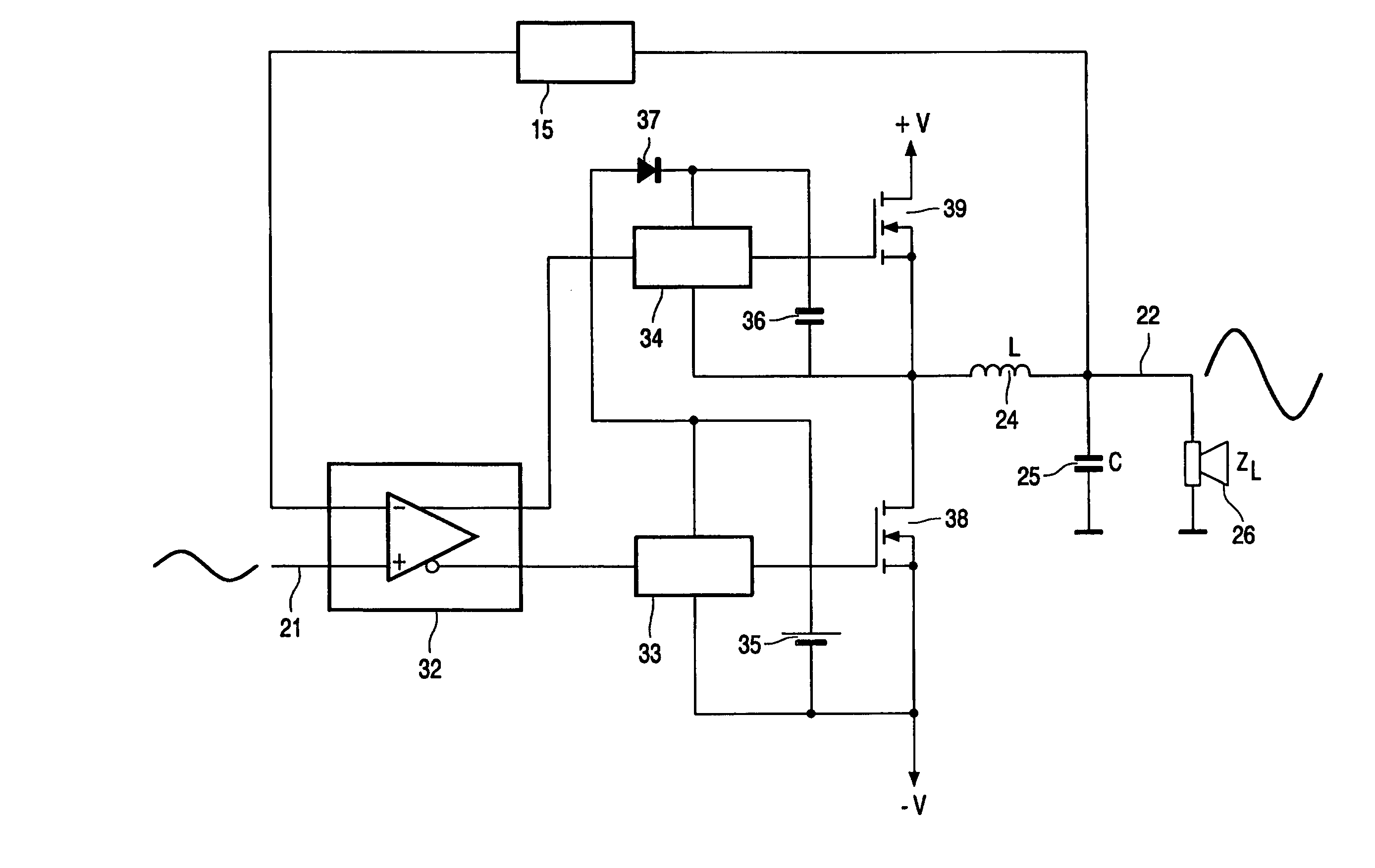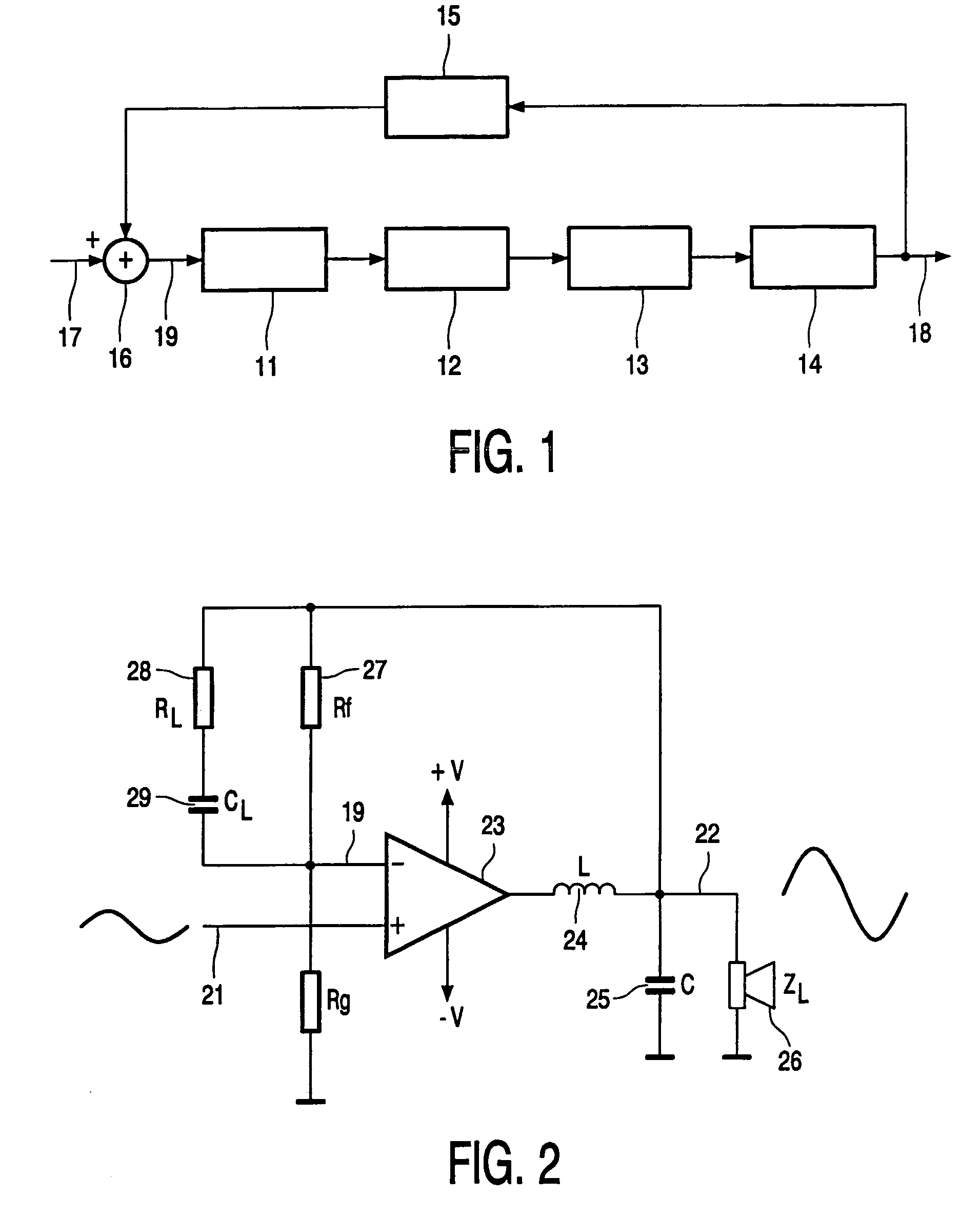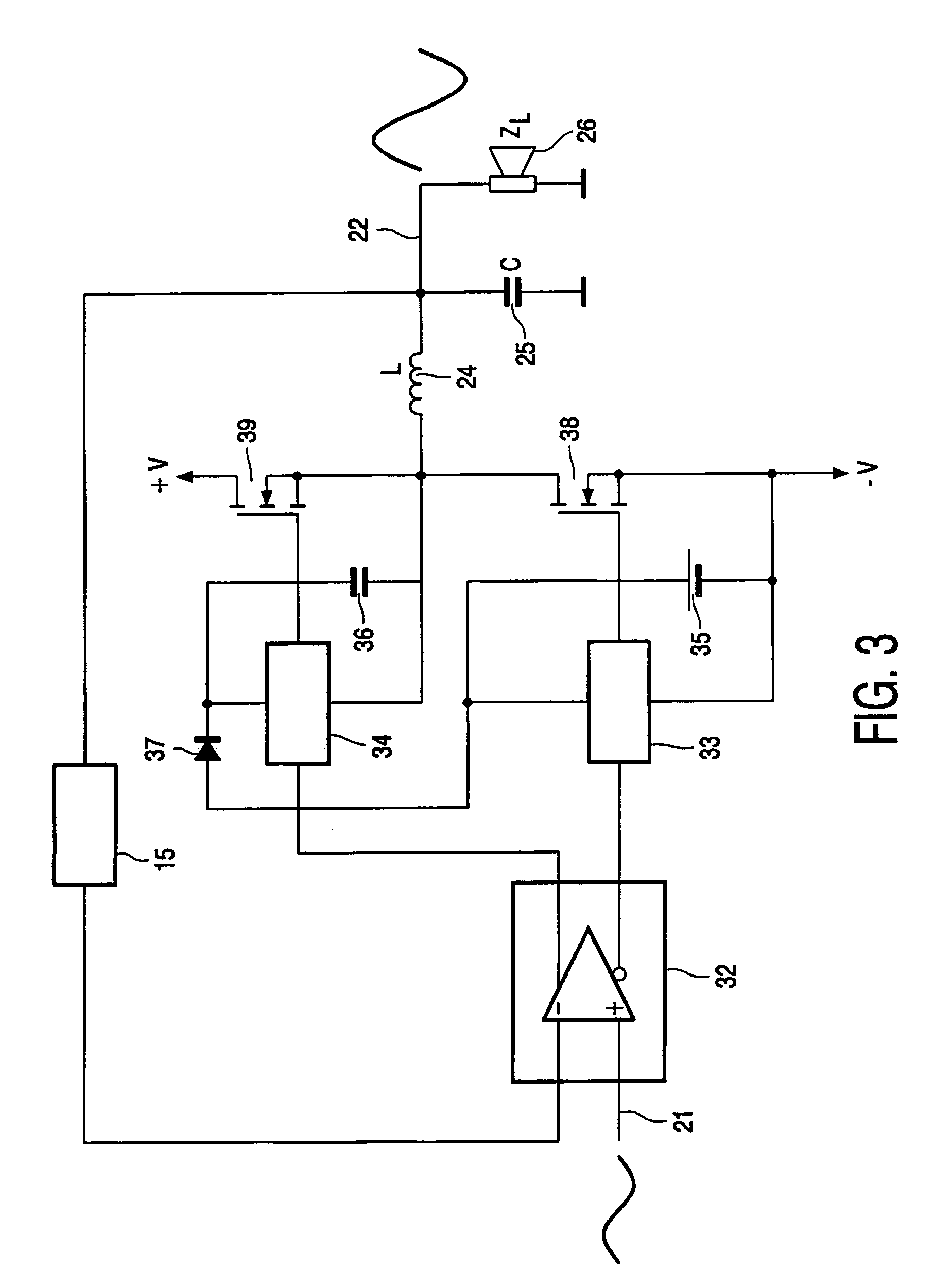Power amplifier
a power amplifier and amplifier technology, applied in the direction of amplifiers with dc-coupled stages, amplifiers with semiconductor devices/discharge tubes, amplifier modifications to reduce non-linear distortion, etc., can solve the problem of limiting the modulation swing, the number of non-linear errors and distortion products, and the substantial frequency-independent distortion figure. problem, to achieve the effect of keeping fast reaction speed, and low distortion products in the output signal
- Summary
- Abstract
- Description
- Claims
- Application Information
AI Technical Summary
Benefits of technology
Problems solved by technology
Method used
Image
Examples
Embodiment Construction
[0019]FIG. 1 shows a block diagram of a switching power amplifier. The amplifier has an input circuit 11 which receives a signal from a summing node 16 at a hysteresis-free input 19. The input circuit 11 is coupled to a driver element 12 for driving a switching power stage 13. The output of switching power stage 13 is a block wave signal having a frequency well above the operational frequency range of the electrical signal to be amplified. The block wave signal is coupled to a low-pass filter 14, which removes the high frequency block wave and results in a power output signal 18. A control circuit 15 provides a feedback loop from the power output signal 18 to the summing node 16 at the input. The summing node further receives the electrical input signal 17 which is to be amplified. Some delay is present in the elements 11, 12, 13 of the amplifying chain due to the physical nature of the circuits used, e.g., semiconductors. The control circuit 15 is provided with oscillation feedback...
PUM
 Login to View More
Login to View More Abstract
Description
Claims
Application Information
 Login to View More
Login to View More - R&D
- Intellectual Property
- Life Sciences
- Materials
- Tech Scout
- Unparalleled Data Quality
- Higher Quality Content
- 60% Fewer Hallucinations
Browse by: Latest US Patents, China's latest patents, Technical Efficacy Thesaurus, Application Domain, Technology Topic, Popular Technical Reports.
© 2025 PatSnap. All rights reserved.Legal|Privacy policy|Modern Slavery Act Transparency Statement|Sitemap|About US| Contact US: help@patsnap.com



